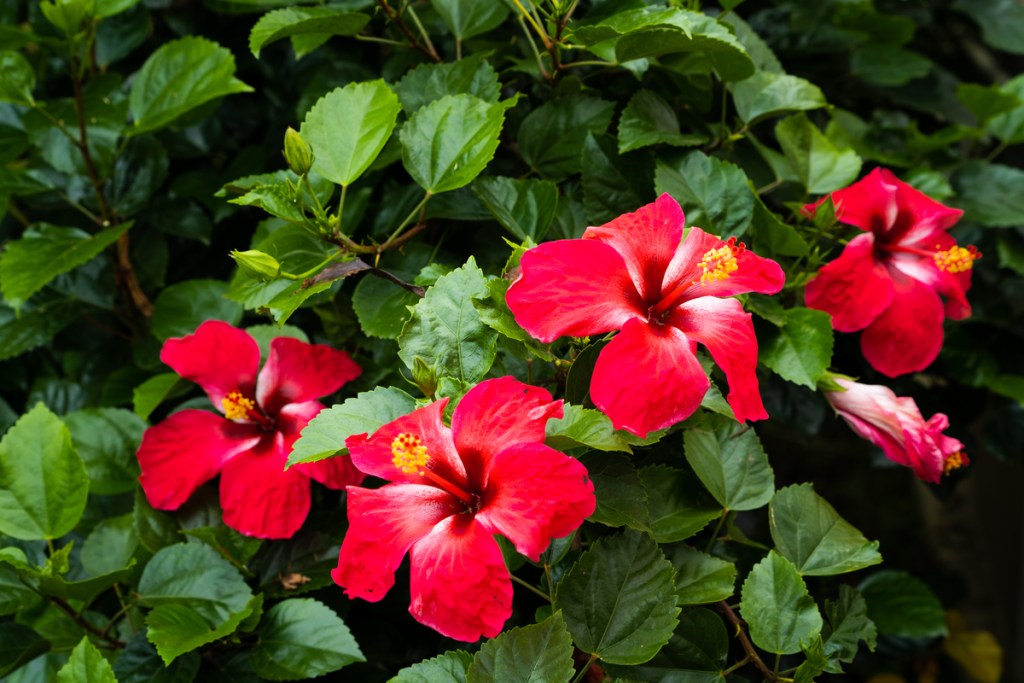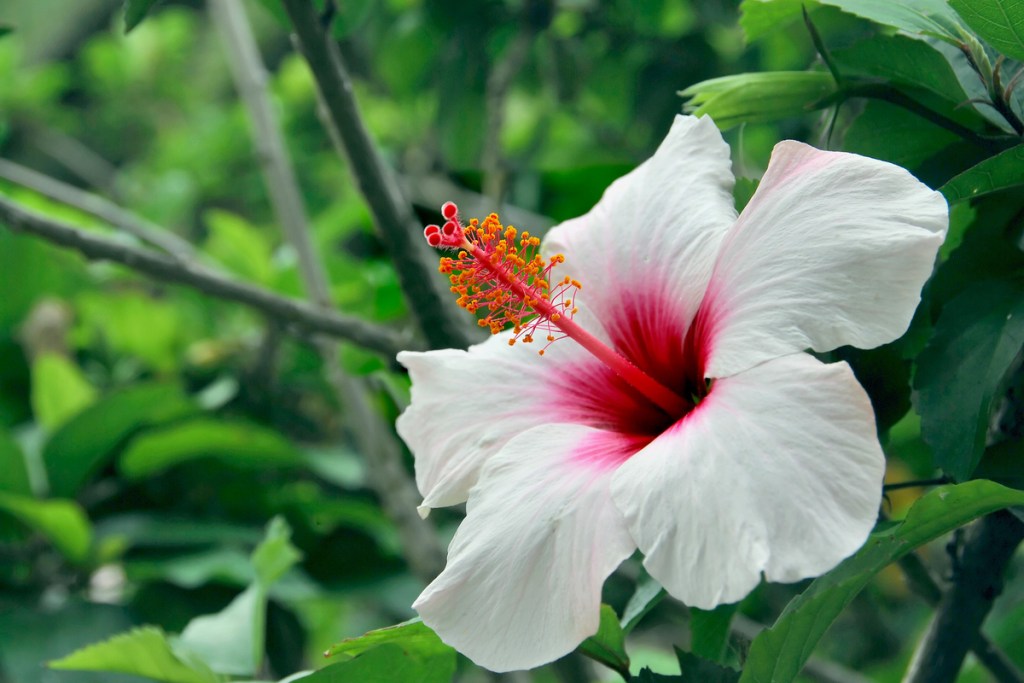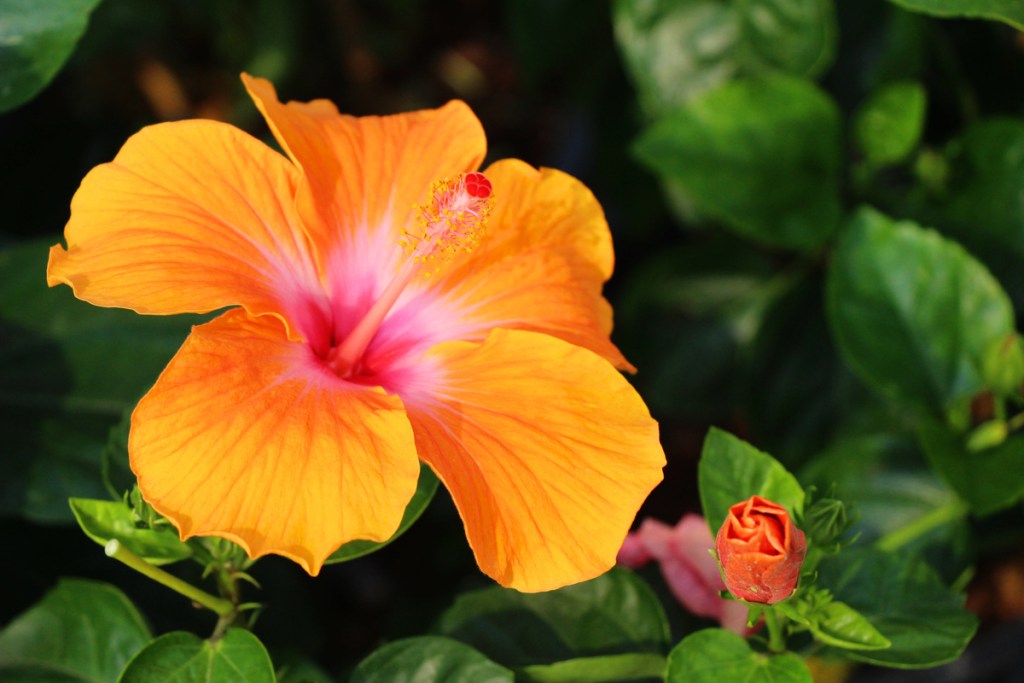Deadheading is the task of removing old, faded flowers from a plant. Rather than cutting back the whole plant, with deadheading you only remove the individual flowers. It’s a common gardening practice that is helpful in a number of ways, but it is not always a requirement for the health of the plant. Hibiscus are raised for their big, colorful blooms, and gardeners want to give them every opportunity to shine. So, should you deadhead hibiscus? Maybe.

There is more than one kind of hibiscus
The genus Hibiscus includes more than 200 species of woody shrubs and perennials, including such favorites as Rose of Sharon, native Rose Mallows and Swamp Hibiscus, and colorful Tropical Hibiscus. They are native to tropical and temperate regions around the world. With so many different species in the mix, it is best to take a somewhat nuanced approach to plant care recommendations, including something as seemingly simple as deadheading.
Why should you deadhead?
When a spent flower is removed, the seed-making parts are also removed. This reduces the spread of plants with a reputation for taking over the neighborhood, like Rose of Sharon. Removing old flowers may also give nearby buds more space to bloom, which is good for many members of the hibiscus family because of their oversized flowers and generous bud set.
Another benefit of deadheading is that doing so makes the plant look more neat and tidy, rather than letting the old blooms wither, turn brown, and get moldy in place. In a container setting, removing old flowers before they fall off also prevents possible buildup and staining by this debris on the surrounding patio or deck. If one of these issues is a concern for you, then deadheading will help.
How to deadhead hibiscus
Hibiscus flowers are attached to the plant by short stems. Here's how to remove them:
Step 1: Remove wilting flowers by gently snapping them from the plant at the stem with your fingers.
Step 2: Avoid damaging nearby buds that have not yet opened, as they will soon give you another flush of color.

Shear the plant to stimulate new growth and blooms
Hibiscus plants produce flowers on the current year’s growth or new wood. Pruning the growing tips of the plant to remove the old flowers and seed pods also stimulates more new growth, including new flowers. In areas where the growing season is fairly long, gardeners can shear their tropical hibiscus shrubs in mid-season after blooming slows down to stimulate another round of flowers. Here's how to do it:
Step 1: Cut back the whole plant by between 25 and 30 percent, below the level of the previous blooms.
Step 2: Shear hardy shrub hibiscus, like Rose of Sharon, in late winter or very early spring. Although these long bloomers need no help to produce lots of flowers over the course of the growing season, doing so helps to maintain the plant’s size and shape.
Step 3: Tip-prune hardy perennial hibiscus varieties early in the season, when they are 1 foot tall. This promotes lateral branching, which can increase blooming. These varieties can be severely damaged by late pruning, so stick to early season tip pruning or prune them in late fall to early winter, when the entire top has died back for the season.
Why you may want to avoid deadheading
Because hibiscus plants do not require deadheading for their health or ability to continue blooming, some gardeners skip the added task. Hibiscus plants, both tropical and hardy types, can survive and bloom well without deadheading. While many gardeners enjoy one-on-one time with their plants, you may find that you simply don’t have time to do it all. If time is in short supply, it’s OK to skip deadheading your hibiscus.

Sometimes hibiscus buds fall off before they open
Different kinds of stress can cause hibiscus plants to drop their buds instead of flowering. Drought, insect infestation, sudden environmental changes, and extreme temperatures are just some of the reasons this could happen. If your hibiscus plant is not flowering properly, inspect and closely consider all aspects of its health.
Step 1: Water container-grown plants in particular when the soil is dry to the depth of an inch below the surface. In especially hot weather, it may be necessary to water container plants twice a day. Although hibiscus plants can dry out some between waterings, drought stress can cause flowers to fall.
Step 2: Watch for aphids and whiteflies on the stems and undersides of the leaves. Aphids are tiny, soft-bodied insects that suck the juice out of soft plant tissue near the growing tips. White flies are highly mobile insects that erupt like a cloud when you approach or disturb the plant.
Step 3: Control these pests with a strong jet of water on the undersides of the leaves to remove them. Use insecticidal soap or horticultural oil to treat more advanced infestations.
Numerous hibiscus species with different growth habits complicate the issue of deadheading hibiscus. Rose of Sharon is a notorious spreader that can be partially contained by deadheading. Tropical hibiscus do not require deadheading in order to continue blooming, but doing so will help the plant maintain a more tidy appearance. Unlike deadheading, shearing the plant removes growing tips and helps stimulate new growth including flower buds for an extended flowering season.
Editors' Recommendations
- Plant these stunning flowering shrubs for a showstopping garden display this spring
- How to get rid of gnats without damaging your plant’s sensitive leaves
- Growing cocoa plants in the U.S. is difficult (but not impossible): What we know
- Your guide to miniature rose care for a beautiful spring garden
- 3 incredible reasons why you should be using coffee grounds in your garden





